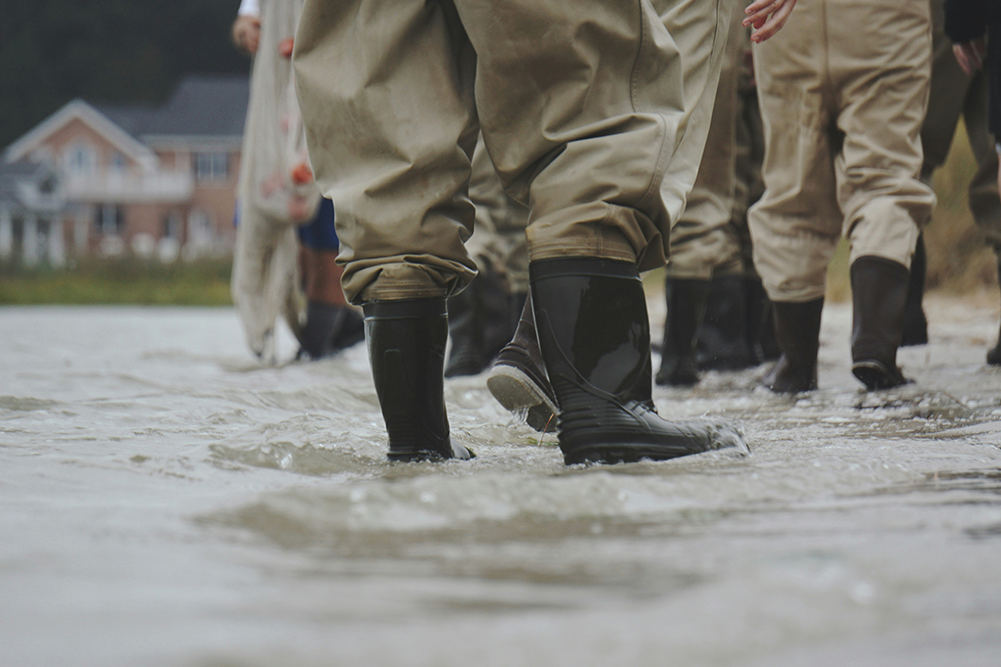Your Cart is Empty
March 11, 2024 4 min read

Depending on where you live, floods may be a monthly occurrence or something that never affects you. However, with the weather becoming more and more unpredictable in recent years, it is important to prepare yourself for the worst. Floods can strike with little to no warning, so stay ahead of the disaster with a few simple steps.
First, understand where your house stands on a flood map (1). The Federal Emergency Management Agency produces maps across the United States to let you know which areas of a community are more or less likely to flood, especially if you live on a flood plain or near a body of water. If applicable, purchase flood insurance, as most homeowner’s insurances do not cover flooding. This will allow your house to be protected before a flood hits. A flood map can also be helpful when planning an evacuation route to a friend or relative’s house. Ensure you have a planned destination away from the at-risk area, and be wary that during a flood, trees and other debris may be blocking the roads.
If you live in a flood zone, it is also recommended to “elevate electrical wiring and waterproof [your] basement” before a flood occurs (2). This will minimize your house’s flood damage. Additionally, clearing your drains and gutters allows for water to pass through and decreases the chance of overflow. These precautionary steps can be done well before a flood warning is put in place.
Should you find yourself in a flood zone, it would be helpful to make sure your family knows what to do. Floods can occur with little-to-no notice, so planning ahead of time will be beneficial to avoid panic. First, you may consider practicing evacuating the house with the whole family. By running evacuation drills, every member of the family will be on the same page concerning where they are headed, especially if an exit is blocked (3).
Additionally, ensuring the whole family is aware of routes outside of the house is important. Once you are out of the house and on the streets, will they know where to go? Prepare the whole family in case a flood occurs when you are not home.
It is also recommended to assign roles to different family members. If you have pets, place someone in charge of ensuring they get out of the house, too. If you created an emergency response kit, make sure someone grabs that on the way out, as well.
An emergency response kit contains supplies that could be useful in case of a mass evacuation. It could also be helpful if you were to get stuck in your house and could not evacuate in time, as it would ensure you have rations to last a few days until help arrives.
While the size of your emergency response kit is your prerogative, some items should be included in every kit. It is recommended that you pack three days of food and water (with a can opener!), a change of clothes, a water purifier, and a phone charger (2).
The Red Cross boasts a more extensive list of items to add in an emergency response kit, including a flashlight, battery-powered radio, first-aid kit, medications, copies of personal documents, and extra cash (4). They also recommend you bring one gallon of water per person to prevent dehydration in the event of a longer-term crisis.
In the case of an emergency, however, lugging around gallons of water is probably not feasible. Gallons of water are not only heavy and would slow you down during evacuation, but they take up a lot of space. Instead, consider bringing a water filter. A water filter ensures that even contaminated water is safe to drink–and during a flood, there will be no abundance of contaminated water. For example, Seychelle’s hollow fiber straw can filter up to 1,320 gallons of water, and it is small enough to fit in your pocket. Its hollow fiber technology guarantees removal of 99.999% of bacteria and parasites, making it safe to drink even the most contaminated flood water. A hollow fiber straw not only allows you to save space in your emergency response kit, but it will keep your family drinking clean, safe water until the flood clears.
Depending on your location, you may be more or less susceptible to flood warnings. In either case, it is important to plan accordingly in case of a flood. Understanding your home’s risk of flooding is the first step, and it is wise to purchase flood insurance as well. Additionally, consider preparing your home and your family before a flood is imminent to avoid panic. Preparing an emergency response kit will allow you to bring necessities like food, clothing, and a water filter with you during an evacuation. For a cost-efficient and compact water filter, try a Seychelle hollow fiber straw.
What should you do to prepare for a flood?
Purchasing flood insurance, going over evacuation routes with your family, and packing an emergency response kit are all ways to prepare for a flood.
What happens during a flood?
A flood is when water overflows in large quantities to an area where water is not usually, like on dry ground.
What are 3 ways to reduce flood damage?
Elevate electrical wiring, waterproof the basement, and clear drains and gutters are three ways to reduce flood damage.
References